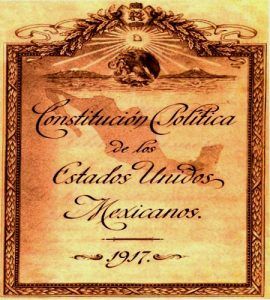Promulgation of the Constitution of 1917
From the eventual triumph of the Carranza wing over the conventionists, led by Francisco Villa, during the development of the Revolution, the current Political Constitution of the United Mexican States was promulgated on February 5, 1917.





